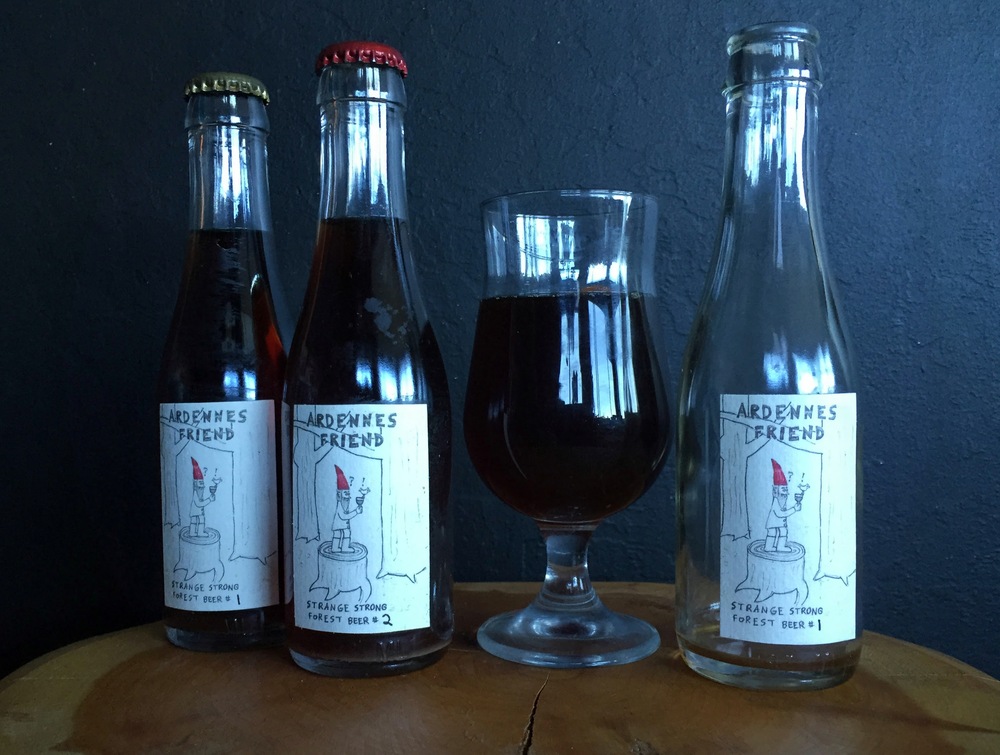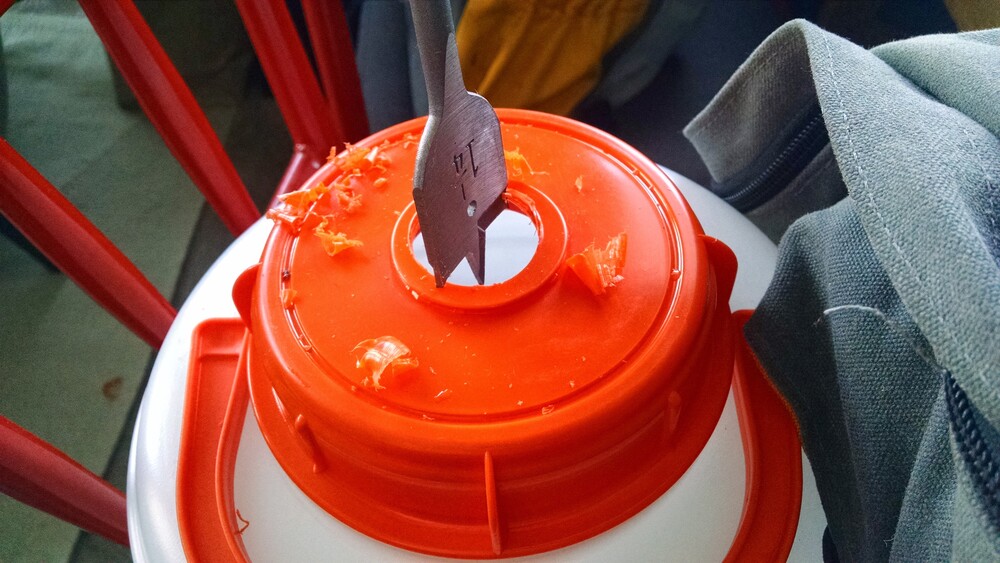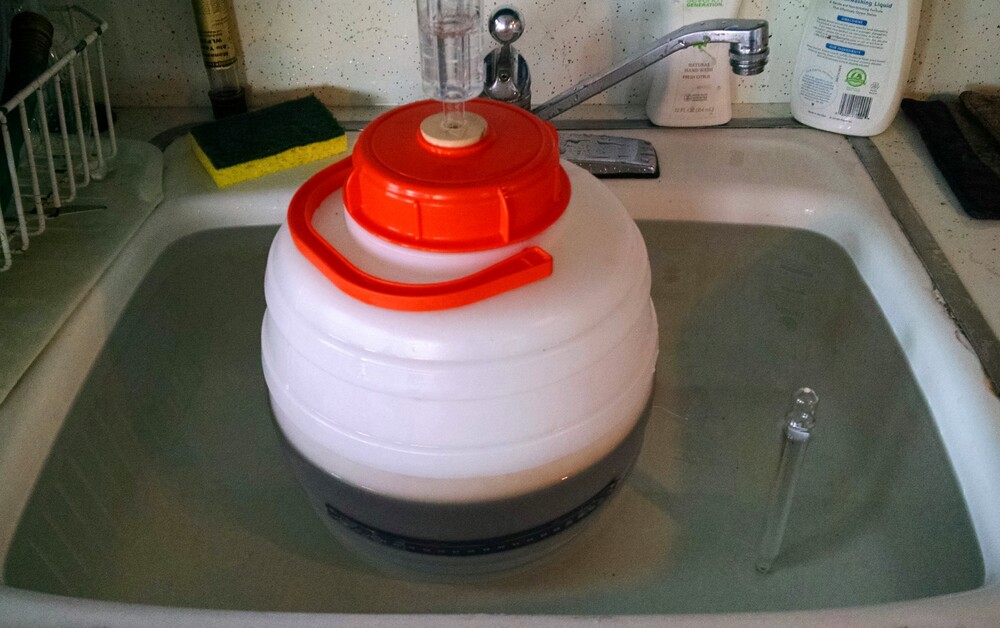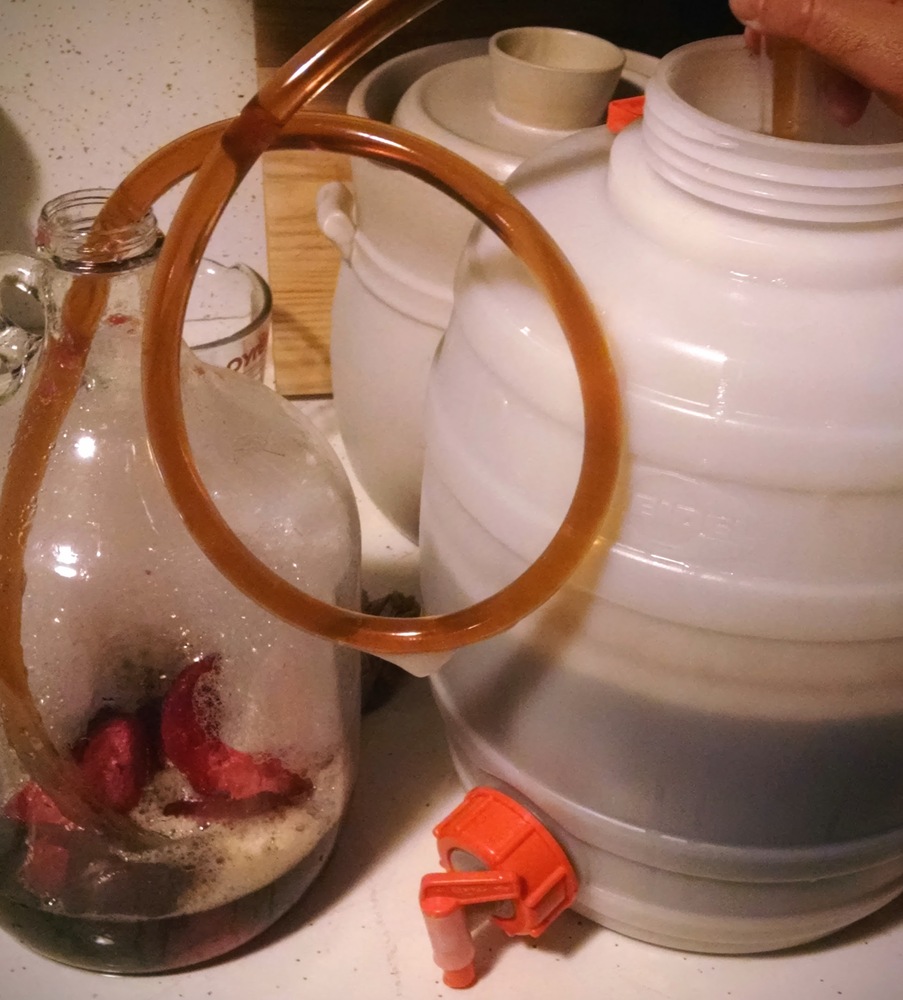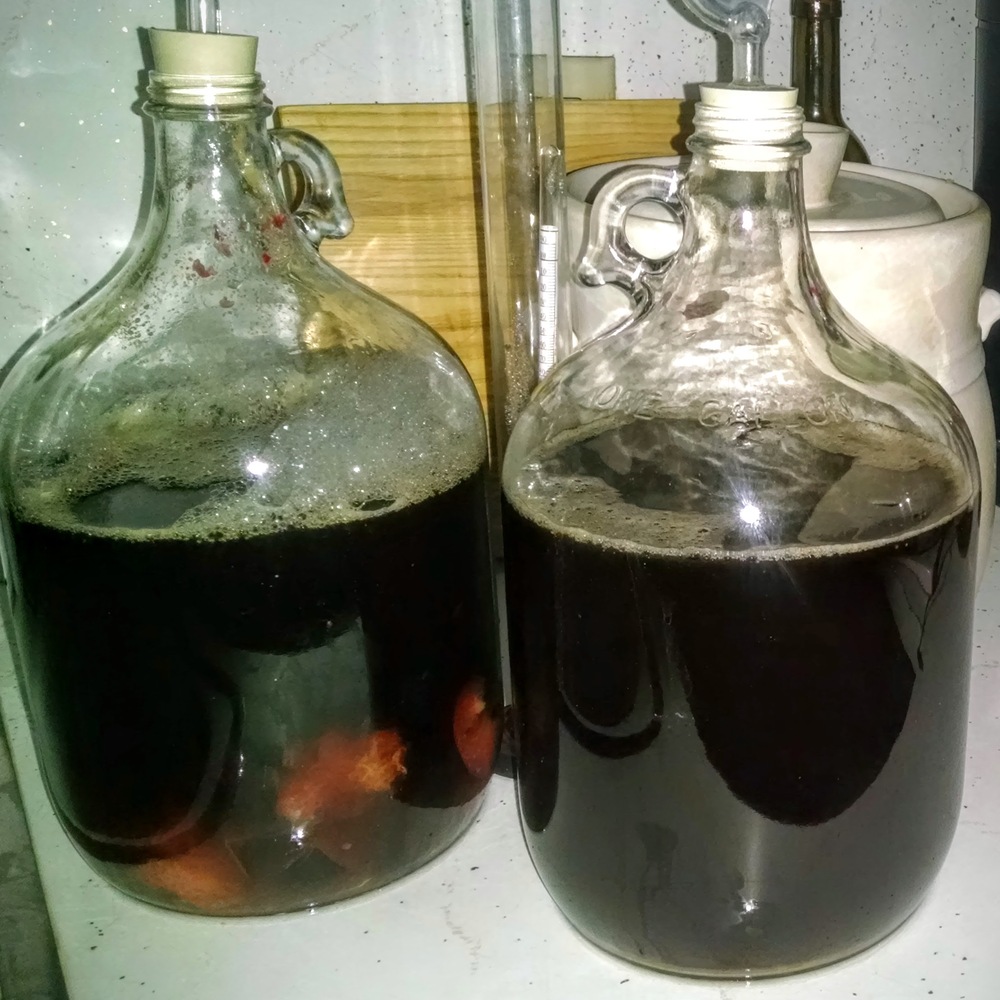For my 16th time homebrewing since I first started two years ago (and as I count it, my 26th & 27th brews, as I often brew 2 batches in a day or split a batch into a few different smaller experiments), I wanted to go farther out and play around with the secondary fermentation / infusion and aging steps in a beer inspired by the forest. I decided to make a very strong Belgian-inspired beer with simple malts, caramel, and a small amount of an earthy hop (Saaz) and then age it a few different ways. The result (as always, having a little fun with the label):
The base beer didn’t really follow any particular style, but it’s probably closest to a dark version of a tripel– it used only base malt (primarily amber malt extract) and caramelized invert sugar* (a.k.a. dark belgian candi sugar), and very minimal hops.
*Invert sugar is a mix of the very simple sugars glucose and fructose, created by heating sucrose (table sugar) in the presence of acid to break it down: C12H22O11 (sucrose) + H2O → C6H12O6 (glucose,) + C6H12O6 (fructose). The idea behind using it in brewing is it’s very easy for yeast to metabolize, making it possible to bump up the alcohol level in the beer without making a heavily malty beer (since almost all of the invert sugar is converted to alcohol).
The brew day began, as usual, with adapting to unplanned issues. The new compact 3 gallon plastic fermenter I’d bought (since I typically only brew 2-gallon batches these days) didn’t have a hole for an airlock:
Brewing went as planned, but I’d read that to avoid excessive esters, the Belgian yeast I’d bought (WLP500, rumored to be grown from samples taken from the Chimay brewery) behaved best if kept at a lower temperature for the first day or two of fermentation (since the yeast generates so much heat during the rapid initial fermentation– especially working on a wort heavy in easily-fermented sugars– that it can easily raise the wort temperature 10-15 degrees). Lacking any high-tech brewing apparatus, I kept the fermenter below 70F in a sink of cool water for the first two days, then took it out for the rest of the fermentation. It picked up heavily around the third day, and was actively bubbling for the next 7 days – a long primary.
After two weeks, the wort had fermented down from a specific gravity of 1.090 to 1.011, producing what should be a 10% ABV beer. I tasted it and was a bit concerned– it was a bit “hot” (solventy), with some brown sugar sweetness and bubble gum and clove esters– an exaggeration of the Belgian style. Patience, patience… Belgian-style beers are expected to age for months, and the point of this was to balance it with other flavors.
At this point I siphoned it out into two sanitized glass jugs. One had a pound of ripe pluots (halved, pits and all), and the other had a third of a spiral of toasted oak that had been soaked in rye whiskey for 5 days.
I let it age another two weeks on these, then bottled it with a bit of sugar (to kick off a bottle conditioning step). The beer aged on oak settled into a clear dark ruby-brown beer, and the beer aged on pluots was a cloudy purple the color of pluot skin (hard to see in this photo):
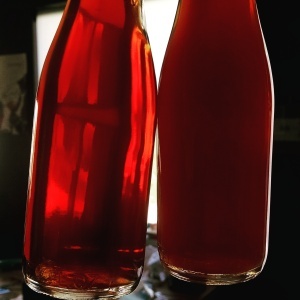
I finally tried the carbonated beers for the first time about two and half months after brewing, and they were quite different (and much improved from the primary fermentation sample). Both were strange, interesting, I might even say “not bad” (if not what I think of when I think of beer), and I’ll see how they change over time.
The beer aged on oak was very “umami”– an aroma reminiscent of miso or soy sauce, and a taste that made me think of a brandy infused with shiitake mushrooms and a bit of caramel. The alcohol was clearly there, but the hints of solventy heat were completely gone. I’m glad I’d bottled this in tiny 187mL (7oz) bottles, as this is something I could imagine sipping from a small glass.
The beer aged on pluots was excellent– a powerful sugar-plum aroma, but a taste that was more tart, like a not-too-sweet pluot cordial. It drank well on its own, but also worked well cut with soda water to make a bit more of a spritzer (or, as someone who shall remain nameless said, “wine cooler”).
I don’t think I’ll get tired of this as a set of side projects…
